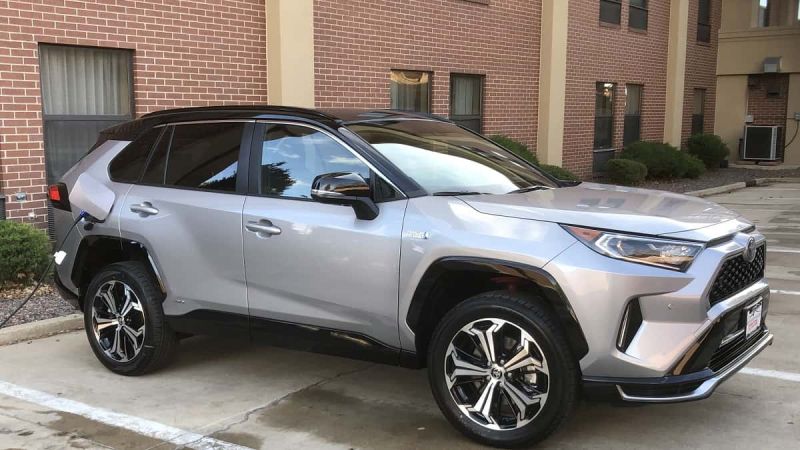Plug-in hybrid-electric vehicles (PHEVs) are greener than conventionally-powered vehicles, but are they greener than battery-electric vehicles? Engineering Explained is one of our favorite sources of technical information related to green vehicles. The site's host, Jason Fenske, has a mechanical engineering degree from North Caroline State University and he is blessed with a solid dose of common sense.
Related Story: 5 Plug-in Hybrid EV Myths Battery-Electric Purists Wish Were True
In the latest episode of Engineering Explained, Fenske breaks down the CO2 emissions of the popular Toyota RAV4 Prime and the top-selling Tesla Model Y. Both crossovers earn a perfect 10/10 for smog emissions from the EPA, but the RAV4 Prime does have some CO2 emissions from its tailpipe. As you may know, the battery of an EV has a large carbon footprint associated with its manufacture. Does the RAV4 Prime's smaller battery make it "more green" than the Model Y? No.
Related Story: Tesla Owners Are Buying Toyota RAV4 Prime Plug-in Hybrids – Here’s Why
However, the calculations reveal a result that is a lot closer than many might suspect. Also, they include a LOT of gasoline-powered miles from the RAV4 Prime. If you use your RAV4 Prime primarily for commuting and your percentage of EV miles driven is as high as 80%, there is no meaningful CO2 footprint difference between these green vehicles.
On the other hand, where your car came from also matters. Shipping a green car across the globe using the world's most polluting cargo ships is no way to start a green car down a low-carbon-footprint path. Both Tesla and Toyota do this. They make cars in one place then ship them to other markets.
Check out the video. It is an enlightening look at why there is a lot more to being green than tailpipe emissions when it comes to green cars.
John Goreham is a long-time New England Motor Press Association member and recovering engineer. Following his engineering program, John also completed a marketing program at Northeastern University and worked with automotive component manufacturers. In addition to Torque News, John's work has appeared in print in dozens of American newspapers and he provides reviews to many vehicle shopping sites. You can follow John on Twitter, and view his credentials at Linkedin
Image courtesy of Kate Silbaugh













Comments
Current most overused, and
Permalink
Current most overused, and mostly vague, term is “Green”. Right up there with Climate Change, and the somewhat fading Global Warming. I remember when
“a new ice age is coming” was the scare factor. Got to keep the folks concerned, if not downright frightened, to assure that orders are followed. Baa Baa
The scientists were NOT
Permalink
In reply to Current most overused, and by Mark Day (not verified)
The scientists were NOT predicting an ice age. And unfortunately for our children Global warming is real.
"If you use your RAV4 Prime
Permalink
"If you use your RAV4 Prime primarily for commuting and your percentage of miles drive is as high as 80%, there is no meaningful CO2 footprint difference between these green vehicles."
Say what? This sentence makes no sense to me.
Yikes! Thank you for pointing
Permalink
In reply to "If you use your RAV4 Prime by David Stone (not verified)
Yikes! Thank you for pointing out this typo. It was a whopper. I have corrected the text to read, "If you use your RAV4 Prime primarily for commuting and your percentage of EV miles driven is as high as 80%, there is no meaningful CO2 footprint difference between these green vehicles."